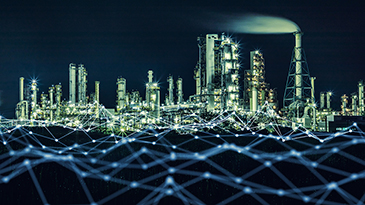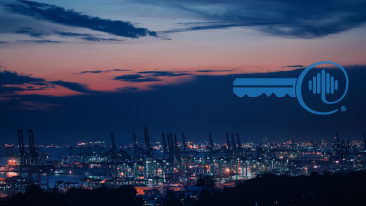Over the past several years, the hydrocarbon processing industry (HPI) has been going through a digital transformation, increasingly adopting digital technologies to improve existing processes and structures to improve performance. This blog is the first in a series focusing on those digital technologies that are helping provide the process industries with more efficient, safer, profitable and sustainable operations.
In recognition of the increasing significance of digital technologies, approximately four years ago, Hydrocarbon Processing magazine launched an entire section devoted to the processing industry’s digital transformation. From this new section, we have been privy to some of the most interesting and cutting-edge technologies effecting our industry, all designed to optimize operations; increase safety, efficiency, sustainability and profitability; decrease equipment and unit downtime; better simulate training exercises; and so much more.
What are these digitalization tools and what’s their significance to the processing industries? The following is an overview of some of the many digital technologies being adopted by the HPI. Although this is a condensed list, it does showcase how plant operators, engineering and construction and equipment/supplier companies are building and utilizing new technological tools to evolve the industry into a new age of digital prowess.
Augmented/virtual reality. Process industries are benefiting greatly from the adoption of augmented and virtual reality (AR/VR). These technologies enable plant personnel to better train new and seasoned engineers for various field work, emergency situations, plant disruptions and/or maintenance functions. For example, wearable AR headsets enable the user to view specific data on various pieces of equipment. This is done by projecting digital images on the headgear’s lenses. Maintenance personnel can simply look at a particular pump or valve — or any piece of equipment — and the headgear lens will display metrics such as flow rate, pressure, etc.
- AR is also helping maintenance personnel better complete maintenance operations and activities. AR headgear allows engineers the ability to display specific equipment specifications, blueprints, etc., on the device’s headgear display. Advanced options can also show new and seasoned maintenance staff step-by-step instructions to properly conduct specific maintenance activities. If challenges arise, AR technologies allow the user to phone a subject matter expert (SME) and use video or teleconferencing — via their headsets — to work through specific activities to complete an assignment.
- VR systems enable better training by simulating various plant operations and/or situations/disruptions. Organizations can utilize VR goggles to place plant personnel in a virtual plant for maintenance, construction and/or emergency training without being in harm’s way.
Artificial intelligence. Artificial intelligence (AI) is being utilized in the process industries to make significant strides to optimize plant operations, safety, profitability and sustainability. AI is being used in software and digital platforms to monitor equipment health and provide users with predictive analytics, which is decreasing equipment downtime, increasing reliability, providing actionable diagnostics for enhanced plant/unit performance and much more. AI can also boost energy efficiency, monitor plant emissions, optimize production and supply chains and substantially increase margins and profitability.
Digital twins. A digital twin is a digital copy of a system, unit or process that can replicate real-life operations. Digital twin technology is helping provide companies the ability to simulate operations and configurations on units — to conduct “what if” scenarios — without affecting real-time operations. The technology is crucial in providing operators with a virtual “best path forward” for unit efficiency, as well as a beneficial asset for training personnel on process and unit functions.
Drones and autonomous systems. Drones and autonomous systems (e.g., robots) can be used for safety purposes. For example, drone usage has been adopted for inspection services to increase plant and worker safety. Instead of having an inspection engineer climb a column to monitor cracks, corrosion, etc., on process equipment, drones can be flown around the unit to provide high-resolution video and/or images to personnel on the ground or within a control room. These images can provide inspection and maintenance personnel with evidence needed to create work orders.
Autonomous vehicles/bots, embedded with AI, have also been used to monitor safety hazards (e.g., corrosion) in processing plants and drill rigs. These AI-embedded inspection bots can learn to “talk” to each other and communicate issues regarding potential safety hazards that need maintenance work. In some instances, these bots can also autonomously arrange tickets for maintenance work orders.
Cybersecurity. The use of new digital technologies has also opened the HPI to additional cyber threats. This predicament has led organizations to invest in additional cybersecurity technologies to protect critical infrastructure and company/employee data. These cyber-barriers (e.g., firewalls, encrypted data) are crucial to keep plants, companies and workers safe.
Plant design, engineering and construction. Finally, new digital technologies are aiding the capital construction industry. Digital tools (e.g., software, AR/VR, modeling systems) are enabling EPCs to better design, engineer and configure individual units, plant infrastructure or whole grassroots facilities, as well as expansions, unit integration, commissioning, supply chain, logistics and so much more.
Takeaway. As the process industries venture along on their digital transformation journeys, new technologies are transforming the way plant owners/operators, EPCs and service/supplier companies are optimizing operations. These technologies, along with additional digital tools and equipment — wireless sensors and cameras to monitor gas leaks, emissions, etc., cloud platforms and computing, advanced instrumentation and control rooms, etc. — are propelling the HPI to increased reliability, profitability, safety and sustainable operations.
To learn more about what digital transformation means for EPC firms, view our on demand webinar, How Digital Transformation at Engineering Firms Will Be a Big Win for Plant Owners.





Leave A Comment